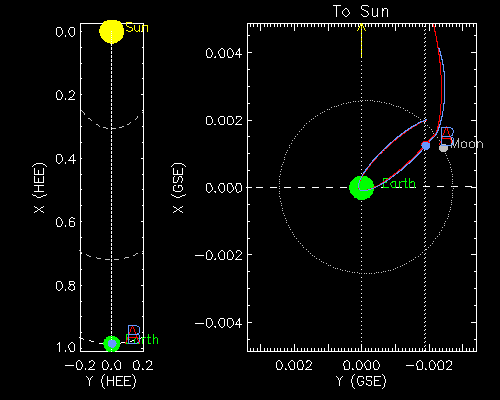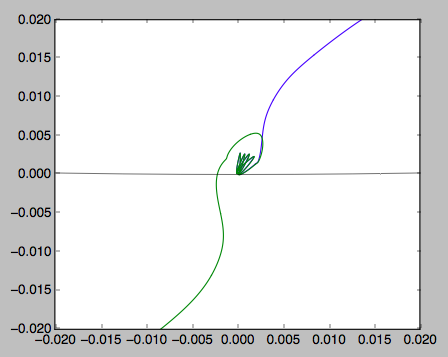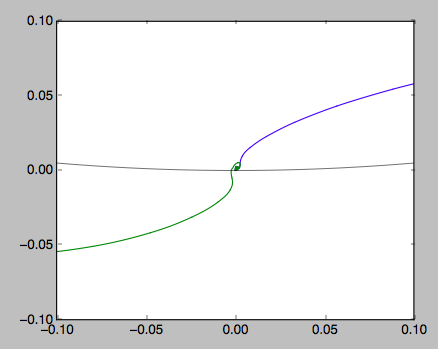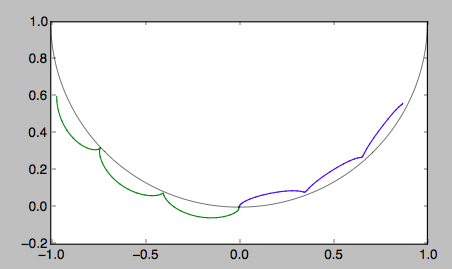Am I wrong?
Yes, I am wrong!
The way the SOHO A and B pair move roughly symmetrically ahead and behind the Earth is by being in orbits similar to that of Earth but slightly closer and farther from the Sun. Thus when seen the GIF in the question which is in a frame that moving along with the Earth (but not rotating) at ~30 km/s it looks like A and B are leave cis-lunar space directly towards and away from the Sun.
But looking in a rotating frame with the Earth at the origin (Python plots below), it's clear that as soon as they move a bit in those directions, orbital mechanics takes over and they start along their "Ahead" and "Behind" orbits.
Answer: The arrow points towards the Sun just like the animation says. The folks at NASA who successfully launched the probes and threaded those precision lunar flyby's could in fact point an arrow in the right direction as well!
The Python plots below of data from JPL's Horizons web service. Units are AU, Sun is up.
The GIF is a string of images from https://stereo-ssc.nascom.nasa.gov/cgi-bin/make_where_gif




